Do I need to apply to Black Card if I am a former VIP Rewards Member?
All VIP Rewards members were automatically enrolled in the Black Card program and don’t need to apply again.
Welcome, you are in!




You may recognize this moment—a point where you’re wondering if a change is imminent and what your next move might be.
This feeling can come after years of steady winning that suddenly feel less steady, or simply a growing curiosity for a new frontier beyond the familiar rhythms of Hold’em.
The thought has probably crossed your mind—after a session, while watching a stream, or in casual conversation: What would it be like to try PLO?
In this guided tour, we’ll walk you through the types of situations you’ll face, the unique feel of the game, and the strategic tools players employ to master it. You’ll find familiar principles, but also discover how Omaha can challenge and refine your strategic thinking.
Welcome to The Great Game.
The good news: The hours you’ve invested, the study you’ve done, the adjustments you’ve made in NLHE all still matter, a lot. In fact, the fastest path to success in PLO is learning how to effectively adapt that existing experience.
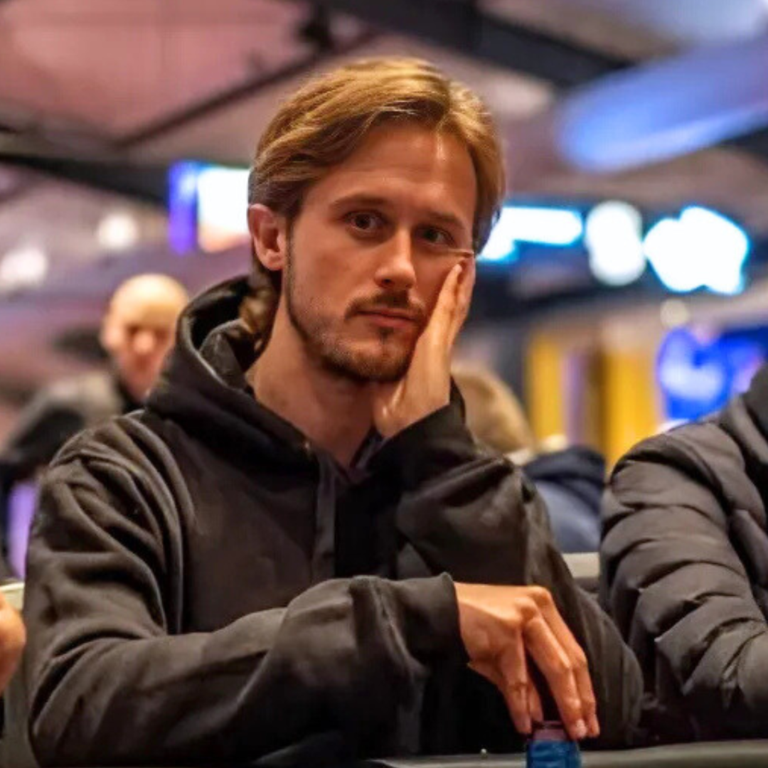
“Back when I started, the single best decision I made was hiring a coach, which for me was JNandez. That’s what truly impacted my learning. His system of preflop hand categories was a complete game-changer. It gave me a solid foundation and a clear structure where there was none before.”



But the real difference isn’t just arithmetic. It’s rhythm.
In a way, switching from No-Limit Hold’em to Pot-Limit Omaha is like a classical pianist mastering jazz.
Hold’em is slower and more deliberate, as edges feel sharp and clearly defined and decisions often carry enough weight to create clarity. A single hand can feel like a duel where one person holds significant advantage.
In Omaha, by contrast, the pacing is much faster, with more action and close hands. It feels more like a race, where multiple hands are competing for the lead. Equity is spread more evenly, and hands collide more closely. Outcomes are rarely defined on the flop, and board developments are highly impactful.
This creates more variance, and it’s true that the highs and lows can be sharper, but what is also true is that variance is the lifeblood of any healthy poker ecosystem.
For recreational players, it’s what keeps the experience exciting and alive. Winning sessions mask their leaks and drive them to keep playing. In the long run, this ends up generating a bigger edge for well trained players who play a solid game.
Variance, in this sense, isn’t just noise or downswings. It’s what makes professional poker possible and profitable.
In the chapters that follow, we’ll look at the transition through several layers:
We’ll share real stories and reflections from the times our coaches navigated this very same journey, and you’ll be invited to test your own instincts over the next few chapters.
We’ll also look at tools like the Range Matrix, Aggregated Reports, and the Equity Graph — frameworks that turn complexity into simplified heuristics. You’ll see why equities run closer and how EV Difference highlights where flexibility is possible and where precision is critical.
So what does Omaha’s ecosystem look like today? That’s where we begin.
Every poker ecosystem can be measured by two forces: how quickly recreational players lose, and how much rake is being taken out of the pool. These two factors set the ceiling for how much a professional can realistically earn. To get a clear view of Omaha, we look at the data.
Is the grass greener in those PLO pastures? It can be.
The answer lies in something that professional poker players know well: your edge doesn’t come from only from the cards you’re dealt, but also the environment you play in.
When you site select and seat select well, you can easily find the best ROI for your time. Adding PLO to your repertoire expands your map. Instead of waiting for the right Hold’em lineup, you gain access to many more doors.
Take the PLO200 pool as an example. In our research, we mapped the density of recreational players on three specific poker sites, as well as the shift in winrates of regulars depending on how many recs were at their table.
The result is clear: the average winrate of professionals rises sharply with every additional recreational player, and the amount of fish you need to win at a site has very stark differences.
Site
0 Rec
1 Rec
2 Recs
3 Recs
4 Recs
Avg
Pokerstars
0.19%
21.3%
44%
26.6%
7%
2.2
ACR
16.7%
33.3%
30.4%
13.3%
2.7%
1.5
GGPoker
4.2%
19.4%
33.8%
28.8%
11.9%
2.3
Site
0 Rec
1 Rec
2 Recs
3 Recs
4 Recs
Avg
Pokerstars
-3.3
6.2
9.6
10.8
12.5
9.1
ACR
-3.6
1.6
5.4
7.6
10.3
3.4
GGPoker
-10.11
-3.31
-0
3.19
5.19
.6
Edges in PLO exist — but like in any game, they depend heavily on conditions. The tactical challenge is less about whether PLO is “beatable” in theory, and more about selecting the right tables and environments to make it beatable in practice.
The current Omaha pool looks different compared to Hold’em. Fewer players have invested in deep solver study. Mistakes are more frequent and often more costly. Starting with the most common ones:
For professionals entering Omaha, this means opportunity as the collective knowledge of the player pool is still maturing. You don’t have to be perfect — just prepared. And even small structural improvements in your approach can stack up quickly.
At a macro level, Omaha plays differently. More players see flops, more pots go multiway, and more boards get contested. Pot sizes grow quickly because equities run closer, which means you’re often playing for meaningful stacks by the turn.
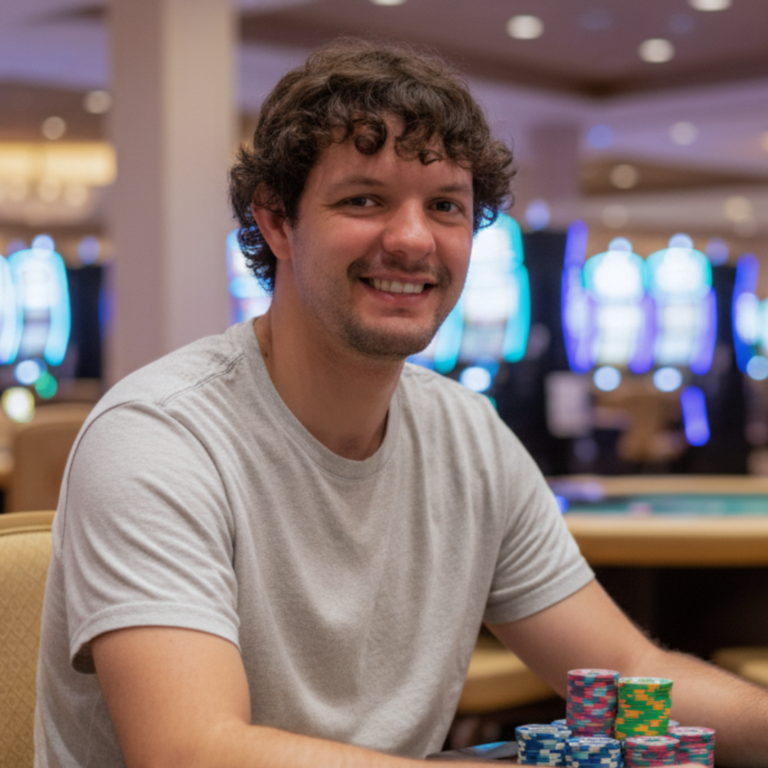
“You very often have a piece of the board and equities run closer which means you will have close decisons much more often than in NL. I find this fact to be very engaging and I am always thinking deeply when at the tables.”
That doesn’t mean blind play is irrelevant — in tighter pools, pressure on early position ranges and blind-vs-blind edges still matter. But across most games, the true separator is nuttability: how well your hand or range can arrive at the nuts by the river.
In Hold’em, one-pair hands often carry you. In Omaha, they rarely do. You need hands that can stand up not just now, but across multiple runouts.
And then there’s the energy. More cards, more flops, more decisions.

“It’s much more fun.
It is a very interesting, complex, and action-packed game.
I especially love live PLO games. It’s so much fun, and I still look forward to every live session today.”
It’s a subtle but powerful difference. Instead of long stretches of folding, you’re engaged in hands constantly. The game invites thought, problem-solving, and focus. For professionals who thrive on decision-making, that’s not a bug, it’s a feature.
Edges, pools, flow, and feel — these are the tactical realities of PLO today. The opportunities are there, and the games are alive. But tactics only describe the environment. To actually play well inside it, you need structure: frameworks that turn complexity into clarity. That’s where we head next.
Now that you’ve seen the table and felt the tempo, let’s walk through how professionals actually think in Omaha. What frameworks help you see more hands clearly, which tools speed discovery, and where your existing Hold’em skills become surprisingly useful.
Hold'em skills that carry over
What you should practice
Range/polarity advantages
Frequency of betting with an advantage
If Hold’em is about precision, Omaha is about recognition. You won’t memorize every combo — there are simply too many. Instead, you’ll learn to spot patterns and understand how equities shift. This is where Omaha starts to feel like its own language.
In Hold’em, precision is the currency of edges. Knowing exact frequencies — how often to c-bet, how often to check, how often to barrel — defines much of modern play. Solvers have sharpened this focus. Small mistakes in frequency alignment compound quickly, and the best players dedicate enormous energy to refining them.
In Omaha, precision matters too, but the volume of combinations makes memorization impractical. With 16,432 starting hands instead of 169, you can’t simply memorize how each one fits into a given spot. Instead, Omaha rewards pattern recognition.

“What shocked me was how quickly my strong hands became trash. In Hold ’em, if you flop top pair, top kicker, you feel pretty good. In PLO, that same hand is often a clear fold by the turn. It completely rewired my brain to stop over-valuing one-pair hands and start thinking about draws and nut-making potential instead.”
Which ranges connect better with board X, the EP open range or the BB calling range? Which combinations give you playability across multiple runouts? How do wraps, pairs, and suits interact to shift equity dynamics?
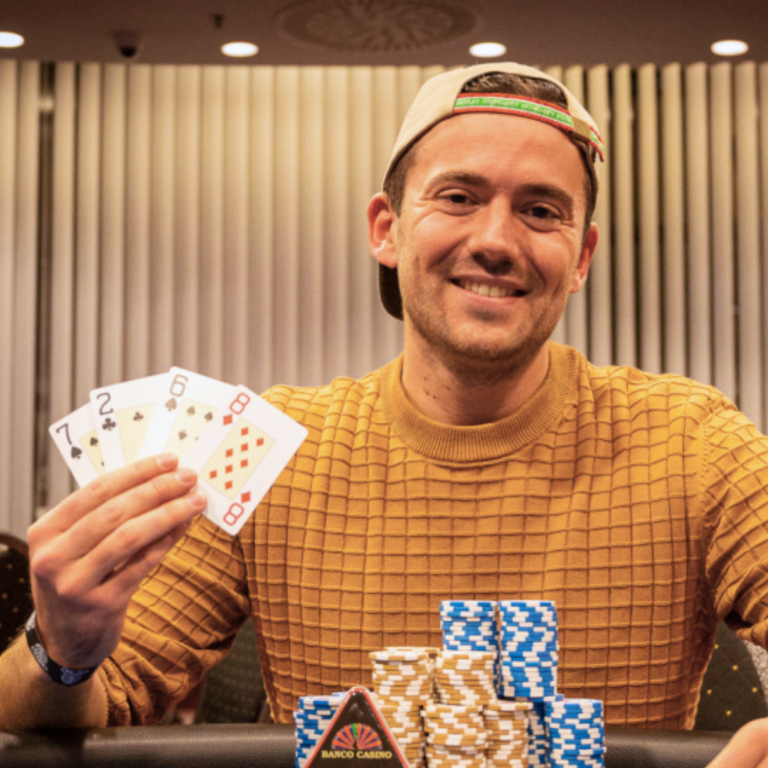
“What surprised me about PLO was the degree to how much preflop strategy would affect your ability to generate a decent winrate. If your preflop strategy was off, there was almost no way you would win consistently postflop.”
One of the first things you want to do when learning PLO is to learn hand categories and structures: double-suited broadways, rundown connectivity, nut-making combos, and the sorts of blockers that change whether a line is feasible. Once you can spot the category, you know the toolkit to apply; the details fall into place faster at the table.


One practical surprise many Hold’em players notice is this: even when you have a range or polarity advantage, PLO’s equities are often compressed. The Equity Graph — a visual snapshot of how your range stacks up against an opponent’s on a particular board — makes that clear quickly.
In practice this changes how you use position. A visible range advantage no longer always justifies a standard c-bet; instead you sometimes use position to control pot size and press edges later. The graph tells you where safety lies and where you need to preserve fold equity. It’s less “I have it locked” and more “I have a lead I can press or keep small.” That is a subtle but powerful tactical shift, and it’s part of what makes PLO engaging for players who love multi-street decisions.
In Hold’em, that board would often justify a near-range c-bet. In Omaha, it doesn’t.
This is often a key “aha” moment for NLHE players: even with a clear range advantage, you must account for your opponent’s connectedness to the board.
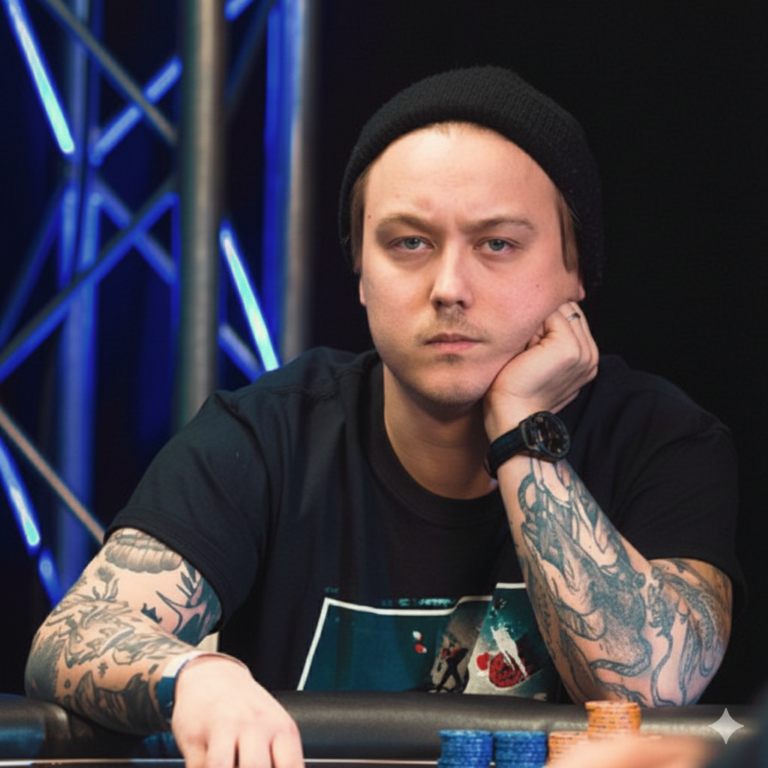
“The info that you can have in your hand in form of sidecards and blockers is huge. More combos, more thinking, more gamble, more fun. More is more.”
The reason: equities remain compressed. The Big Blind still connects widely. Over c-betting gets punished. Instead, the Button leans on positional advantage — checking more often, controlling pot size, pressing edges later.
This is one of the first strategic surprises NLHE players encounter in PLO: even when graphs show a clear advantage, execution looks different.
In a less polarized game, you are not as reliant on specific cards to have a strong hand. The advantage comes from the fact that most players have not yet mastered this type of play. The game is less solved, and the opportunities for creative lines and profitable mistakes are everywhere.
The Preflop Matrix works similarly to a Hold’em chart, but it is framed to account for suit combinations, with the cards you select first being the highest two cards you have. The diagonal line is the key: combinations in the top-right are ‘good suits’ (suited to your highest card, for example: A♠K♥7♠6♥), while those in the bottom-left are ‘bad suits’ (unsuited to your highest card, like: A♠K♠7♥6♥).
The colors in each square tell you the current GTO strategy: Red means Bet or Raise, and Blue means Fold.
This matrix is available for postflop play as well, allowing quick takeaways like: How often do we bet KK on QJT? The heat map quickly gives you a chance to find your best cards to bet, and potentially open up some surprising bluff paths.
One of the traps NLHE players can fall into when approaching Omaha is trying to study the game with the same hand-by-hand precision they’re used to. With so many starting hands, that approach quickly becomes overwhelming.
That’s where solvers and tools can help — but only if we use them well. If you search for how to play your exact hand, you’ll end up with micro-takeaways that are useful in that one spot, but too narrow to carry into different situations.
Instead, the real value comes from zooming out. By grouping hands into categories — like double-suited broadway pairs — you begin to see how entire structures behave. Suddenly the solver isn’t telling you how to play a single hand, it’s showing you how a family of hands tends to perform.
This, more than anything, is the essence of PLO study. You can’t memorize the precise combo that does X, but you can learn the overarching concepts that apply across situations. And those concepts are what translate to the felt.
One of the most useful tools you’ll use is EV Difference: how much better the top solver line is versus the second best. That number tells you whether a deviation is an academic sin or a practical choice.
In PLO you’ll find many thin margins — hands that prefer 4-bet only slightly over calling, or c-bet only fractionally more often. That closeness is an invitation: use population reads to tilt marginal spots when the table dictates, and save your discipline for the large EV gaps that matter.
A small gap — say, 0.03bb — signals that flexibility is possible.
That flexibility can be used to incorporate exploits, such as calling instead of 4-betting against a pool that 3-bets too tight, or mixing in more aggression if you expect your opponents are out of line.
Larger gaps, by contrast, show where precision matters most.

“PLO is an equity driven game, whereas NLHE is more about ranges. Blockers play a MUCH bigger role in PLO compared to NLHE, which makes semi-bluffing a highly profitable play. This induces A LOT more action. In general, people just play worse on average, especially the when you add more cards to your hand.”
A common misconception is that Omaha is all about wild exploits — that balance doesn’t matter. The reality is more subtle, and to understand it, we must first look at how balance and exploitation differ between the two games.
In both games, balanced play forms the foundation. Lean too far into deviation and strong opponents will punish you. But the texture of exploitation differs.
In Hold’em, the player pool today is sharper. Exploits often mean tailoring your strategy to individuals — identifying specific tendencies and punishing them selectively.
In Omaha, population-wide mistakes remain more pronounced. Many players c-bet too often. Others misapply Hold’em heuristics in spots where equities are more compressed.
The most reliable exploits aren’t about singling out one opponent — they’re about understanding what the field as a whole tends to do, and building counter-strategies that harvest those leaks.
This makes PLO a game of balance first, with a strong layer of population exploitation laid over it. It’s not chaos. It’s structured improvisation, where the real advantage comes from mastering the patterns that define the game, rather than memorizing a thousand individual outputs.
In the example shown, MP has 3-bet EP before the flop and the flop checks to the aggressor. The Aggregate Report displays:
From here, you can apply filters to instantly answer strategic questions:
Aggregated Reports make it easy to spot macro patterns — for example, that certain positions might only c-bet around 50–60% of flops even as the aggressor, or that boards you’d “auto-bet” in Hold’em get far more checks in PLO.
Just like the Matrix gives helicopter-view insights into range construction, the Aggregate Report does the same for flops. It compresses hundreds of boards into something explorable and intuitive — a way to train your instincts not board by board, but category by category.
Strategy in PLO is less about memorizing perfect responses and more about building mental habits: recognise a structure, consult the Matrix, check the Equity Graph, and decide how large the EV gap is.
Do that repeatedly and you’ll discover the patterns that turn into repeatable advantage. In the next section we’ll move from these frameworks to the professional considerations — where you pick the right games to cash in on your skill.
Transitioning into Pot-Limit Omaha isn’t only about learning new tactics or rewiring your strategy. At the professional level, it’s also about embracing a different ecosystem — one with its own realities, risks, and rewards.
This section explores what it looks like to build a sustainable career in PLO: how professionals think about longevity, structure, and growth.
Edges in PLO don’t come from strategic refinements alone. They come first from where you sit.
As we showed in the beginning of this guide, the number of recreational players at a table has an outsized effect on win rates. With two or more recs, regulars often show healthy returns depending on the site. With just one, even strong professionals can hover at breakeven.

“I have way more availability in games to choose from. Before I had only holdem. Now I have NLHE, plo4, 5c or 6c to choose from. Makes it more fun to me to change things up every once in a while, and can choose the best games.”
That means the first edge isn’t your c-bet frequency — it’s lobby awareness. It’s the discipline to sit only in profitable spots, and the patience to pass on games where the rake or lineup erodes your ROI.
And at live tables, this awareness often extends to game format (4-card vs. 5-card), rake structures, and table dynamics. PLO’s professional ecosystem rewards players who approach seat selection with the same rigor they bring to postflop decisions.
Professional poker careers often follow this arc: from Fan to Student to Rookie, building consistency, then into Professional. Some reach the Established Pro stage, focusing on high-ROI spots, or even becoming Specialists who diversify into coaching or staking.
Switching formats doesn’t reset that journey entirely — it simply moves you back a few steps, reminding you what it felt like to climb. For some, that return to the Fan–Student mindset is the very thing that keeps their career alive.
A game that once lit the fire may not do so forever. Sometimes the professional path requires stepping into a different format simply to keep the experience rewarding.
For some, that’s PLO — or even 5-card PLO, which in many ways feels like poker’s new frontier: wide-open exploration, patterns yet to be solved, and edges still waiting to be discovered.
Every professional knows: variance is part of the job, and in PLO, it has a sharper edge. Four hole cards create more equity shifts, more close spots, and more all-in confrontations. This means your bankroll management has to expand accordingly.
The swings create space for skill expression over the long run, and increase their winrate by keeping recreational players playing. Professionals who structure their bankrolls properly and approach the game with patience find that the numbers smooth out.
As Jared Tendler puts it in The Mental Game of Poker:
“Some players try thinking about their earn rate: If they’ve lost a buy-in over an hour, they instead have made their average hourly rate of $X. … Some players believe using an hourly rate is a way to rationalize losing. In small samples it is, but the larger the sample size your earn rate is based on, the more reliable it becomes.”
That mindset doesn’t erase variance — it contextualizes it. And when paired with proper bankroll management, it becomes the lens that allows professionals to stay grounded.
When answering the practical questions, did you find yourself answering check in a lot of spots, or betting fewer times than was recommended?
Are you more likely to avoid unnecessary risk? To balance carefully between aggression and patience? Or to push edges and apply pressure at every chance?
These aren’t fixed identities. They’re preferences, shaped by experience and mindset. Knowing them gives you a mirror: you can see when your natural leaning serves you — and when it risks holding you back.
Let’s look at 3 main tendencies. Think of where you stand in relation to each one, and notice how each one brings its own strengths, pitfalls, and mental game challenges in PLO.
Players with passive tendencies excel at avoiding unnecessary risk. They rarely get dragged into bloated pots with weak holdings, extract maximum value from opponents’ bluffs, and naturally keep their checking ranges balanced and protected.
The pitfall, however, is that caution can drift into predictability. Savvy opponents will reach showdowns too cheaply, and EV is lost when profitable aggression goes untaken. The key mental game challenge here is recognizing when caution stems from good judgment and when it slips into fear.
By sharpening value recognition and giving yourself permission for the occasional bold strike, you can turn a solid foundation into a complete, resilient style.
Balanced players mix their actions and thrive on adaptability. They weigh spots well, escalate when the hand structure supports it, and pull back when it doesn’t. This keeps opponents guessing — a crucial edge in PLO’s fluid, high-variance environment.
But adaptability has its own trap: If you’re very studied, overreliance on solver outputs without considering population mistakes can cause you to lose a lot of EV. When the solver says your opponent folds 40% of the time to your 3-bet but in reality it’s 10%, you may want to adjust your 3-betting range.
The mental game edge here is guile — With a firm grasp on population tendencies and the fortitude of your existing knowledge, you can mix the best of both worlds.
Aggressive players live with their foot on the gas pedal, seizing initiative and forcing opponents into tough decisions. They profit by punishing overfolders and denying equity, often extracting maximum value in high-pressure spots.
But relentless aggression can be a double-edged sword. Against opponents who call too often, overbluffing burns chips quickly, and constant pressure risks spiking variance to mentally fatiguing levels. The challenge is not to suppress aggression, but to channel it. By pairing their natural drive with selectivity — choosing the right boards, the right blockers, and the right opponents — aggressive players transform volatility into sustained edge.
In mental terms, that means knowing when to slow down, not because aggression is wrong, but because its edge is maximized when it’s timely.
PLO is not just another variant. It’s an ecosystem with room to grow, a strategy game still full of discovery, and a professional path that can stretch careers longer than they might in Hold’em alone.
You’ve seen how variance powers the ecosystem, how strategy is built on patterns and concepts, and how professionals turn structure into longevity. You’ve also glimpsed your own style — patient, balanced, or aggressive — and how it could find a home here.
Whether you dive in fully or add it as a second language alongside Hold’em, Omaha offers something rare: the chance to feel the wonder of learning deeply again, while playing a game that still rewards those who put in the work.

“It wasn’t that scary of a jump in the end. It’s still poker. If you know how one game works, you can also learn how the other variations work too.”
The cards are waiting.
But the real difference isn’t just arithmetic. It’s rhythm.
In a way, switching from No-Limit Hold’em to Pot-Limit Omaha is like a classical pianist mastering jazz.
Hold’em is slower and more deliberate, as edges feel sharp and clearly defined and decisions often carry enough weight to create clarity. A single hand can feel like a duel where one person holds significant advantage.
In Omaha, by contrast, the pacing is much faster, with more action and close hands. It feels more like a race, where multiple hands are competing for the lead. Equity is spread more evenly, and hands collide more closely. Outcomes are rarely defined on the flop, and board developments are highly impactful.
This site is protected by reCAPTCHA and the Google Privacy Policy and Terms of Service apply.
Betting hands that can continue both as bets or as check/calls on a lot of runouts, they almost always need to have some form of equity beyond fold equity.
Betting our very strongest hands and our hands with the best blockers against our opponent’s continuing range.
In Hold’em, every note is familiar, and mastery comes from perfecting a well-understood form. You’ve trained your ear, your hand, your instincts. You know the keys.
But PLO? That’s jazz. It’s wilder. The chords are richer, the improvisation deeper. You still need the fundamentals, but now you’re playing in a world with more combinations, more chaos, and more opportunity for brilliance.
As you embrace the complexity, you start hearing the music differently. You realize the chaos has a rhythm of its own. And once you find it, the freedom is intoxicating.
You’re not abandoning the piano — you are experiencing a natural evolution of your journey, building on your skills by embracing a new style.


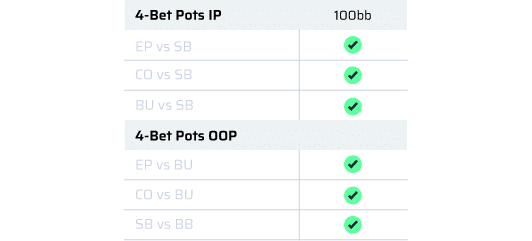










All VIP Rewards members were automatically enrolled in the Black Card program and don’t need to apply again.
Welcome, you are in!